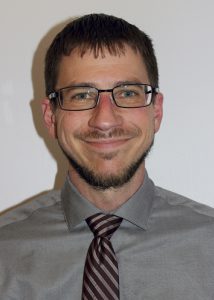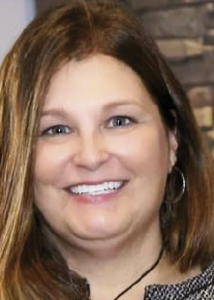LESSONS LEARNED
Education experiences during the pandemic can help bolster professional development
By Dave Willis, CPIA
To say the COVID-19 pandemic has altered our world is an understatement. In few places have pandemic-based changes been more pervasive than in education. Rough Notes recently engaged four individuals from academia—two students and two professors—to capture their experiences with educational shifts over the past two years, and how what they went through can help the industry strengthen professional development going forward.
“Everything went to an online or virtual format,” recalls Jordan Boyd, CPCU, AIC, AINS, who earned his associate degree in insurance and risk management from Lansing Community College (LCC) this spring. For instance, “The Institutes moved from physical books and in-person tests to fully online materials and testing, allowing for more fluid testing windows that let students take tests when they felt prepared, instead of a forced date and time at a testing center.”

“Students learning netiquette from online classes found that it translates directly to what is expected in professional meetings. Also, proper technology setup, a distraction-free area to work, and a strong internet connection are necessary for both learning and business.”
—Jordan Boyd, CPCU, AIC, AINS
Automated Mail Processor
Auto-Owners Insurance
At LCC, Boyd adds, “Classes were offered in an online hybrid format, allowing completion to be done according to an individual’s own schedule.” Students could take part online in real-time or on demand.
Mary Stucko, insurance and risk management/business professor at LCC, explains that the school serves many non-traditional students, including some who already work in insurance but may not have a degree. “We are the first community college in Michigan to offer an associate degree in insurance and risk management,” she explains.
Facing change
In the fall of 2021, the college introduced what’s called a “hyflex” course option. This lets students choose weekly whether to attend face to face or live on Webex or watch the recorded lecture at their convenience. “This has been highly successful,” Stucko observes. “Students love this option. Our working adults don’t have to leave home or work.”
The shift “offered a higher degree of flexibility for those already working,” says Boyd, who is—and was while earning his degree—an automated mail processor for Auto-Owners Insurance and a member of Gamma Iota Sigma, the international professional fraternity organized to promote, encourage and sustain student interest in insurance, risk management and actuarial science as professions.
Pandemic-related shifts have expanded the college’s reach in other ways. “We have seen an uptick in dual-enrolled high school students, and this option is excellent for them, as well,” Stucko notes. “We are also attracting students from outside the Lansing area because they don’t have to drive to our campus for a live class.”
Boyd says transitioning to virtual learning during the pandemic delivered benefits beyond the classroom. “Changes in learning happened simultaneously with employees starting to work more from home and taking part in virtual meetings,” he explains. “Students learning netiquette from online classes found that it translates directly to what is expected in professional meetings. Also, proper technology setup, a distraction-free area to work, and a strong internet connection are necessary for both learning and business.”

“I sometimes begin a class by asking, ‘Before we begin today, what do you have to unpack that, if you don’t unpack now, will impede your learning in the time we have together today?’ Someone always shares an issue or concern that we all can benefit from … .”
—Layne Kertamus, CPCU
Professional in Residence, Risk Management and Insurance
Utah Valley University
Lack of engagement could be a challenge that impedes learning, too. “It’s inefficient to believe you can learn things all by yourself,” Johnson says. “Even if you buy the best learning materials out there, it’s still tough. Think of it like learning a language: If you learn Spanish using only a book and maybe a pronunciation CD, you’re not going to have very good Spanish.
“Insurance is exactly the same,” he adds. “Learning and interacting with peers and mentors in the insurance world can help insurance students understand more fully how to think and talk about the insurance industry in a meaningful way—just like how speaking with teachers and other Spanish-speaking individuals helps a student use their new-found language skills.”
Lack of in-person industry meetings has presented challenges. Boyd notes that it’s been somewhat more challenging to recruit members to professional groups like Gamma Iota Sigma in amore virtual environment. “Also, the lack of in-person industry events has left a vacuum in networking and in-person professional development,” he adds. “At the end of the day, a lot of business is still closed with a firm handshake and eye contact, which is something not naturally learned online.”
Kertamus cites “course rigidity and a lack of student center customization” as challenges, adding that it will take time to evaluate what may not have worked during the pandemic and the extent of skill gaps that result. “For decades, most educational methods have been somewhat ‘sit and get’, case study, and project work,” he explains. “Because of the rate of innovation in our industry, it’s important to place greater emphasis on giving students opportunities to create solutions, anticipate changes, and reconfigure cumbersome business processes.”
Leveraging opportunities
It’s important for insurance organizations to be learning organizations, Kertamus asserts. “This is a key cultural element of a vibrant company,” he notes. “Currently, many employees are swimming in a sea of online, asynchronous courses that are efficient but not necessarily effective. These courses can be refashioned, perhaps with one of many tech applications designed to supplement learning experience—like Miro.com, Take My Quiz, and more.”
Acknowledging that it can be un-comfortable the first few times trainers or students attempt to use something new, like these apps, he advises, “A willingness to experiment is helpful. Also, it helps to know what content is best suited to embed in an application and what should be left out.”
He says that, in the design of professional educational programs, trainers and faculty members should question whether the content and pedagogy pass what he calls a “laundry test.” In other words, he explains, “Can someone do their laundry and listen to the presentation and still get something valuable from it? Or is this content best delivered face to face in a class or perhaps a coaching session?”
Kertamus encourages corporate trainers, leaders, and university professors to not rely on their ascribed authority, especially online. “While we must demonstrate technical prowess within about two minutes of the start of a session, the learning experience must be made more democratic and elevating than perhaps it has been in the past.”
He adds, “We must also take students where they are. I sometimes begin a class by asking, ‘Before we begin today, what do you have to unpack that, if you don’t unpack now, will impede your learning in the time we have together today?’ Someone always shares an issue or concern that we all can benefit from, and this practice builds student-to-student connectivity.”
Johnson stresses the importance of knowing why specific education is being implemented. “That’s true whether it’s for first-time learners or for continuing education. If it is because the learner needs a primary exposure to a certain insurance product before dealing with it in a work environment, make it known. If it is being required to reduce the number of mistakes in professional environments, disclose that.

“I highly recommend the versatility of the hyflex teaching model. If students are sick … they can still watch live Webex and ask questions as we go. If they must miss class due to work, the recorded live lecture feels like being there.”
—Mary Stucko
Insurance and Risk Management/Business Professor
Lansing Community College
“Often, I had a hard time getting through some chapters until I under-stood why that subject or particular insurance product was relevant,” he adds. “My professor, Layne Kertamus, taught us that disclosing information that is both necessary and material is essential in the insurance business. I would wager that it is just as essential in helping potential learners know why they are learning what they are learning. Not only will it help retain trust with employees, but it will also give the learner a clear path forward in their education.
Boyd sees opportunities for the industry to expand its influence. “I believe the insurance industry should assist in the development and application of coursework and technology students are exposed to through school, allowing for a more seamless transition from college to career.”
Also, he encourages support for and participation in industry events, net-working conferences, and professional seminars. “This is vital to students learning the social aspects of professional development when their classes are virtual,” he says. “Businesses should be supporting and participating in these events and making them available to as many students and student groups as possible.”
Stucko sees value in organizations continuing to provide options for learners. “I highly recommend the versatility of the hyflex teaching model,” she says. “If students are sick and aren’t allowed to be in the classroom that week, they can still watch live Webex and ask questions as we go. If they must miss class due to work, the recorded live lecture feels like being there. We will continue using this model from here on out.”
“Having … a schedule helps build a habit to learn on a consistent basis… . Even during the most difficult
points of one’s life—like in a pandemic, for instance—having a schedule and a habit of
weekly learning can be helpful in maintaining some sense of normalcy.”
—Seth Johnson
Assistant P-C Claims Administrator
Brown & Brown Insurance
Boyd echoes the sentiment. “We must continue to allow flexibility in class time and structure so we can lower the barriers some individuals face before starting a career in insurance,” he notes. “Having online courses and associate degree programs for insurance will allow those in the lower rungs of the insurance ladder to climb and will open a door for adults returning to school after raising children or attempting a different career path.”
To help drive learner value, Johnson urges professional development staff to “take time every other week or so for learners to share what they are learning. Not only will this help keep track of progress that students are making and establish accountability for the learner, but it also lets the learning parties share what they are learning, something that has been proven to help with learning retention.
“Be willing to accept feedback,” he adds, “and make sure learners know their efforts to continue their education are noticed and appreciated.”
Finally, Johnson suggests, “Make sure to offer an environment where employees can share what they have learned with their employer. This helps build retention and rapport, creating a better workplace and a better employer-employee relationship.”
Kertamus encourages professional development staff to continuously expand their core competencies. “This has a massive ripple effect on organizations,” he notes. “Specifically, I recommend building on your strengths and others’ strengths, because this ignites the learners’ energy, which is needed for the learner to accomplish more.”





